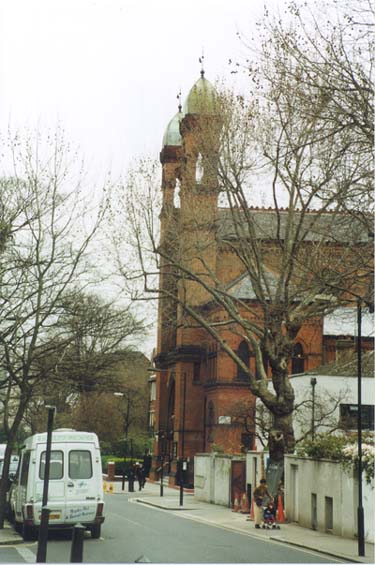
22 March 1998 10:47 AM
The church bells are ringing! Ah, I do love London!
I'm just sitting around at the moment; I woke up at 11:59 p.m. last night, then 5am, 6am, 9am, 10am ... well, no use in getting up too early. Besides, I am on holiday, right?
Cool and overcast today. Thought I heard the sounds of a horse! It turned out to be a woman walking ‑‑ talk about serious heels on her shoes. Speaking of shoes, these @#$@# Avias I just got aren't as comfy as my last pair. Why can't they just leave a good pair of shoes alone?
Well, today seems right for going to Greenwich. And right as I wrote that, the church bells stopped. Nope, they just took a breather, they're still ringing!
22 March 1998 11:56 AM

Lots of people going to St. Sophia's this morning. Weather is nicer, clearing in spots; still cool but I don't think it's gonna rain much.
Took Tube to Paddington. Oh, I saw a couple of kids wearing yarmulkes who must have been heading to synagogue (shown here), down the street, on the other side of St. Matthew's. I walked from Paddington to the breakfast place where I'd gone the first day; it was too crowded, so I walked up one block to "Garfinkel's," and got a mushroom omelet and OJ. £5.50, I think.
GENERAL NOTES ABOUT LONDON SO FAR
[written while sipping OJ and waiting for omelet to arrive]:
· Place is CRAWLING with Germans and Italians!
· Roads are very, very confusing, everyone has the London A‑Z [pronounced "London A to Zed"] guide. Except me, mine is in my shopping bag back in the hotel! [oops]
· No trash cans anywhere [because of possible bomb threats from the IRA, and others]
· The myth about Bad English Teeth is true. The flight attendants were cute, with bad teeth. When people do smile here (which is very rarely), you get a nice view of needed dental work.
· For some reason, the hand dryers in the gents' lavatory, you know, the big blow dryers, actually dry one's hands very quickly over here. Just five or ten seconds, and voila, you're done! Dunno why they work so good in London, and so crappy in the U.S. More research is needed. I'll volunteer to stay!
22 March 1998 5:22 PM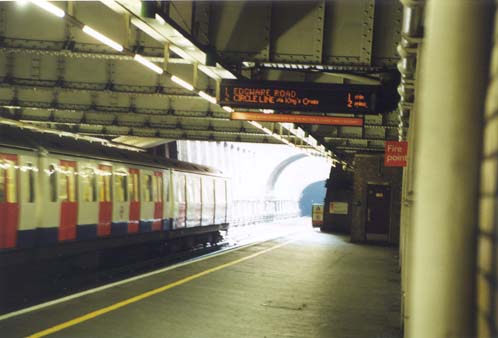
I'm writing this at the close of my day in Greenwich, the "Centre of Time & Space" as it is known (and not inaccurately, as I'll explain in a minute). And what a day it was! First, I took the Tube from Queensway to Bank ...
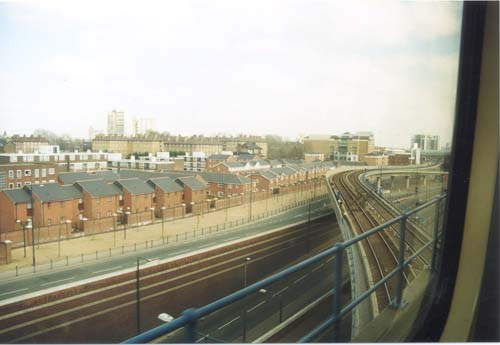
... and then the Docklands Light Rail (DLR) train to the Island Gardens terminus ...
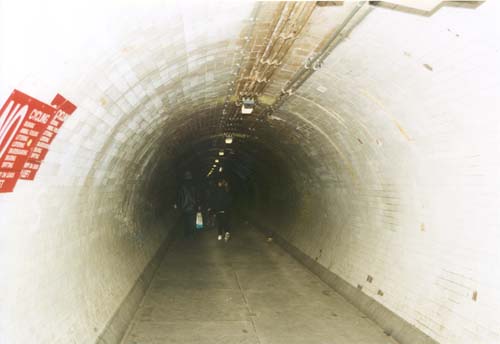
... and finally the foot tunnel to Greenwich. Until they extended the DLR track into Greenwich for the Millenium Celebration in 2000, the last stop was Island Gardens (hence the name 'terminus,' as the track literally ended here), and the only way to get across the Thames was through this tunnel.
The foot tunnel is way cool. It was built in 1902 to allow south London residents to work in the docks on the Isle of Dogs, and it's 1,217 feet in length and about 50 feet deep (that is, it's buried 50 feet underground).
It's lined with 200,000 glazed white tiles.
Wow.
By the way, if you're a fan of The Who's 'Quadrophenia," you might recognize
this location from the photo booklet that accompanied the album.
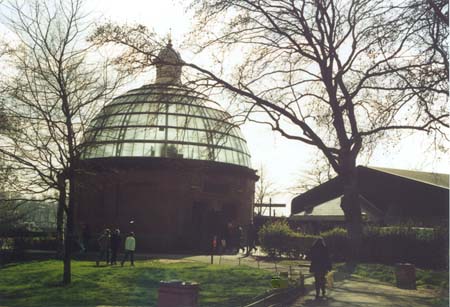
To walk the tunnel under the Thames, you start from one of these pagodas, and take a spiral staircase down. There's a lift inside, if you don't feel like taking the stairs, but it can be a long wait for it (versus a long walk, but hey, it's good exercise). This is from the Isle of Dogs side.
If you want a large map of Greenwich and where I went, or close enough, click the map on the right.
And here's a panoramic shot of Greenwich as seen from the London side, just before I entered the tunnel. Beautiful day! Bit chilly, though. Not that I'm complaining, just reporting the details. If you click on the picture you'll get an even bigger view.
On the left is the Royal Naval College, and on the right is the Cutty Sark (talk about tall masts!), with the Greenwich entrance pagoda to the Thames tunnel on the far right.
Dunno if the guys in the racing skull were training or just having fun.
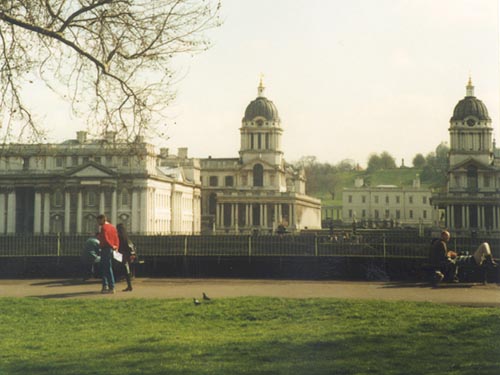
Here's another shot of the Royal Naval College (seen here from the London side of the Thames, before I walked over ... or under ... you know what I mean).
This estate was designed by Christopher Wren (more on him later, when we visit St. Paul's), and built in 1694 first as the Greenwich Hospital, as a home for retired sailors or, more accurately and according to the Royal Charter, "for the relief and support of seamen and their dependants and for the improvement of navigation." The Hospital was closed in 1869, and in 1873 the complex became the Royal Naval College, where officers came from all over the world to train in the naval sciences.
In 1998, the Royal Navy left Greenwich and handed over responsibility for the site to the Greenwich Foundation. Finally, sometime in late 1999 the University of Greenwich began to take up residence in two of the four great Courts and as far as I know, that's where we're at today.
And, for you architecture fans, this is the first Italian renaissance building built in England. Huzzah.
Locals tell two interesting stories about the place, meaning the grounds of the estate. First, they claim it was the jousting ground for Henry VIII. They also claim that during the country's antinuclear heyday in the 1970's, Greenwich declared itself a nuclear free zone, then had to reluctantly drop the title when it was discovered that the college maintained a nuclear laboratory under the grounds.
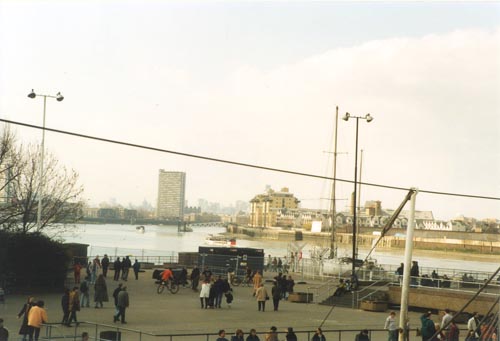
Greenwich is a very picturesque no matter which way you look, whether it be from the waterfront looking out over the Thames ...
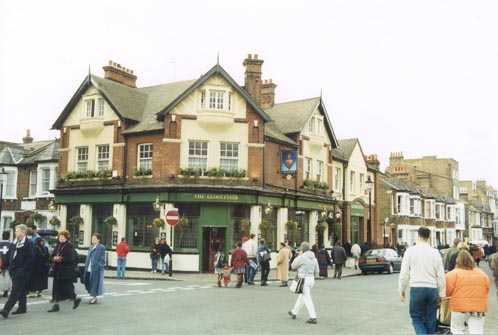
... or just walking down the street. Any street. Seriously. Every building looks like it came out of a Dicken's novel.
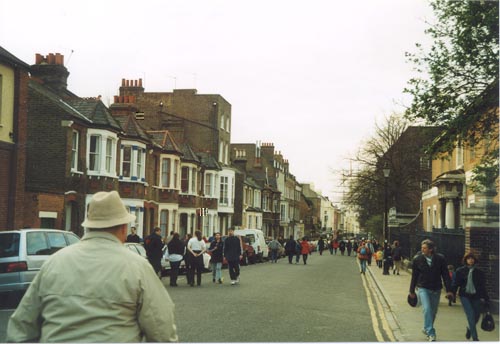
See? I'm not kidding.
As for the Cutty Sark ... well, words don’t do her justice. Neither do photos, really, but they’re better than nothing.
I went on board, for the self-guided tour. There's a great history of the clipper, built in 1869, that is revealed as you explore the ship. She's awesome! I got cool key rings for me, Dad, Nick, made from part of the mast (from a section of metal that was replaced during a refitting many years ago).
And I explored the ship. For those interested in book-type details, I offer the following:
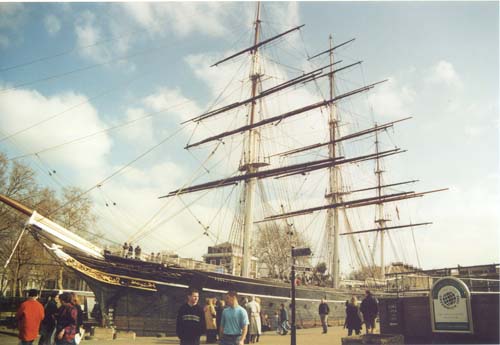
The Cutty Sark, a clipper ship, was build by Scott and Linton, and launched on 22 November 1869. As Captain George Moodie, First Master of the Cutty Sark once said, "I never sailed a finer ship. At 10 or 12 knots she did not disturb the water at all. She was the fastest ship of her day, a grand ship, and a ship that will last forever."
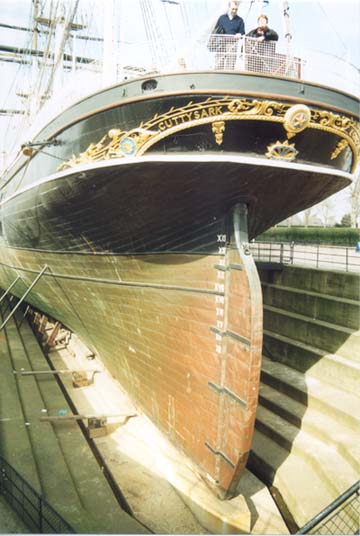
Every graceful, urgent line in her speaks of speed, for she was built as a tea‑clipper on the China run. But her days as a tea‑clipper were numbered; she was baulked [sic] of much service in those seas by the opening of the Suez Canal just a week before her launching; passing through the Canal, steamships took half the time, were more reliable, and undercut the sailing ships on price.
But she was not to be dismissed so easily. Though she carried her last load of tea in 1877, she carried wool from then until 1895 on the Australian run and, under Captain Richard Woodget, was never beaten home by any other ship.
She was sold to the Portuguese in 1895, but in 1922 Captain Wilfred Dowman bought her, re‑rigged her, and maintained her at Falmouth. Upon his death, his widow presented the Cutty Sark to the Incorporated Thames Nautical Training College at Greenhithe, where in 1938 she joined HMS Worcester as a training ship. After the end of WWII, the college acquired a larger steel‑built ship and long required the Cutty Sark.
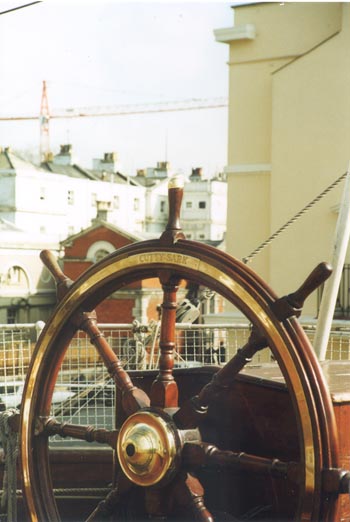
After lengthy discussions about her fate, the last surviving clipper ship was offered to the National Maritime Museum in 1949; the Cutty Sark was moved to a mooring off Greenwich so she could be exhibited during the Festival of Britain in 1951. Work on restoration and dock construction began early in 1954, and in December the Cutty Sark was moved for the last time, to Greenwich, and berthed where she now lies. By June 1957 restoration work on the hull and rigging was complete, and the Cutty Sark was formally opened to the public by Her Majesty the Queen.
And as for the curious name Cutty Sark? It's taken from the Robert Burns poem Tam O'Shanter. This recalls the ancient legend of Tam, a drunken farmer, riding home on his grey mare Maggie.
As he passed Kirk Alloway, the church seemed to be ablaze. Dancing round the flames was a group of warlocks and witches, with the Devil himself playing the bagpipes.
The astonished Tam saw that among the hag‑like witches was one young and beautiful. Her name was Nannie, and she wore only a 'cutty sark,' a short shirt of Paisley linen.
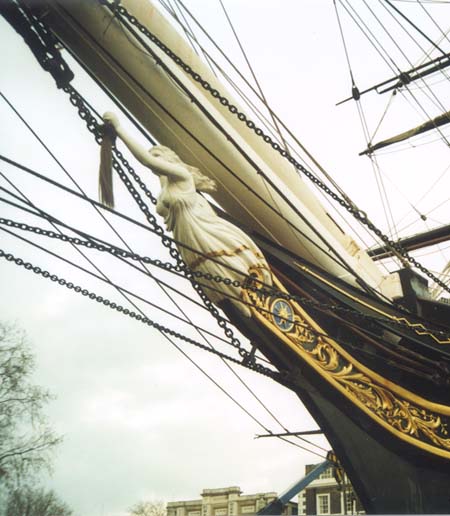
The farmer was bewitched and, as her dancing became wilder, in his excitement:
Tam tint his reason a'thegither
An' roars out 'Weel done, Cutty Sark'.
An' in an instant a' was dark.
Pursued by the witches, Tam fled for his life to the bridge over the Doon, for he knew that they could not cross running water. Nannie was faster than the others and, as the mare galloped over the bridge, she seized it by the tail, which came off in her hand.
That's why in the Cutty Sark's figurehead Nannie's left arm is extended, with clutching fingers. In her racing days, after a fast passage, the apprentices would sometimes make a mare's tail from old rope, rubbed with grey paint, to put in her hand.
After touring the Cutty Sark, I walked down the few dozen feet to Greenwich Pier, which was basically just a place to catch the boat back to London City, if one so desired. £6.95 for a one-way ticket, I think.
Click the right arrow to continue my day in Greenwich ...